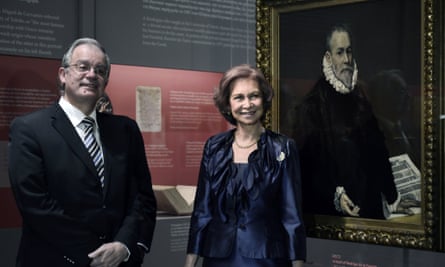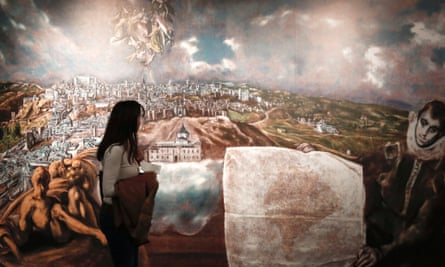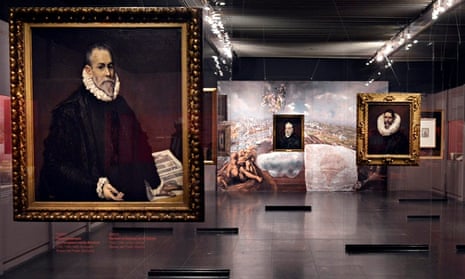El Greco may have left Crete, never to return, in his early 20s, but 400 years after his death, Greece – and his island birthplace – are leading the rest of the world in celebrating the man whose works were widely seen as the precursor to modern art.
“The Greeks have been keen to recognise his Greekness,” said Richard Kagan, emeritus professor of history at Johns Hopkins University in Baltimore, who has helped curate one of a number of El Greco exhibitions.
“But, in truth, he never lost his Greek identity. Until his death [in 1614], he was a stranger in a foreign land and he always signed his works as Doménikos Theotokópoulos,” Kagan saidfrom Philadelphia. “He was aware and proud of his Greekness.”
Few masters have gone in and out of fashion as much as El Greco who, after studying iconography in Crete, moved to Venice then Rome before establishing himself in Toledo, Spain.
Embraced by the great painters of the High Renaissance, he was dumped by their Baroque successors, his style subsequently decried during the Age of Enlightenment as overly dramatic and unnatural.
“He neither had followers nor supporters in the 17th and 18th centuries when critics regarded him as an oddball, a man apart,” said Kagan, an authority on the painter’s Spanish period. “His work was viewed as capricious, extravagant even.”

But now the painter is being hailed as the rule breaker par excellence. From Buenos Aires to Madrid, Washington to Warsaw, exhibitions this year have honoured the man who produced a style so modern it would be taken up by the expressionists and the likes of Pablo Picasso at the turn of the 20th century. In Toledo, his adopted home town, the largest ever exhibition of his oeuvre took place this year.
In Athens, where Spain’s Greek-born Queen Sophia, mother of the current King Felipe, inaugurated two major El Greco shows last week, tight budgets have yielded another approach: with works in short supply, the focus has instead been on illuminating the painter’s life. In the Greek capital alone, five major museums are dedicating exhibitions to the artist in this, the Year of El Greco.
The Byzantine and Christian museum has announced its retrospective will be called Doménikos Theotokópoulos before El Greco. “The exhibition seeks to shed light on the social and artistic environment of 16th-century Crete where Theotokópoulos’ personality was formed before he left Candia [the old name for Crete] for Venice in 1567,” it said of the show, which opens on 3 December.
An exhibition detailing El Greco’s life “between Venice and Rome” took place on the island this summer – a decade after enthusiastic locals, in an unprecedented move, raised funds to acquire two icons painted by El Greco during his time there. “He is the most important person Crete has ever produced,” said Manolis Vassilakis, a town hall officialat the time. “It upsets us that so many think he is from Spain.”

For a long time, the extent of El Greco’s links to Greece were little known, despite his nickname meaning “the Greek” in Spanish. Just as the artist defied categorisation – viewed as so idiosyncratic he belonged to no conventional school – traces of his life on Crete also seemed invisible.
In sharp contrast to Toledo, where scholars have discovered his social circle included Greeks – with some serving as witnesses in the headstrong painter’s many lawsuits with clients – it was not until 50 years ago that his apprenticeship in a workshop on Crete came to light. The island, then a possession of the republic of Venice, was the seat of iconographers trained in the Byzantine tradition.
“Until 1960, when documents were discovered, we didn’t know anything about his presence on Crete,” said Nicos Hadjinicolaou, Greece’s pre-eminent authority on the artist.
He added that it was not until 1982, when two books were found – one in a bookshop and another in the national library – that scholars had any idea of his personal opinions.
In both tomes, unearthed by Spanish scholars, El Greco had scribbled his thoughts on art and architecture. The marginalia debunked the myth that the painter was religious, inspired by Spanish mysticism to draw serpentine figures in other worldly light. “The discoveries were the beginnings of this new burst of current interest in El Greco,” said Kagan.
“They led to new interpretations about a man who clearly fashioned himself as an artist philosopher and who, arguably, was Greece’s most famous artist after Phidias.”

Comments (…)
Sign in or create your Guardian account to join the discussion